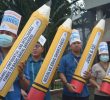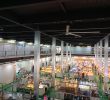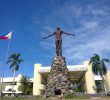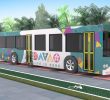In 2006, the US$12.4 billion net worth of the Philippines�s 10 richest is equivalent to the combined annual income of the poorest 9.8 million households.
By Rosario Bella Guzman
Ibon Features
MANILA — In the Philippines, not only is poverty increasing, so are income inequalities. As the old line goes, the rich are getting richer while the poor are sinking deeper into poverty– and this has proved especially true under the Arroyo administration.
Based on various years of the Family Income and Expenditure Survey (FIES), income distribution is skewed and has worsened since 1985. Over the period, the share of the poorest 60% of families in the national income decreased by 1.8 percentage points while the top 20% were able to increase their share by 1.2 percentage points.
According to the 2003 FIES, the richest 20% of the population account for 53% of total national income while the bottom 20% get only 4.63 percent. The income of the richest 10% of households is 21 times that of the poorest 10 percent.
Such inequality cannot be explained by simply attributing it to differences between regions and economic sectors (i.e. incomes of families in Metro Manila are higher than those in the Autonomous Region of Muslim Mindanao).
Income inequality is primarily due to the differences in the ownership and control of the country�s resources within the regions, provinces, urban or rural areas, and economic activities. In short, inequality is still the result of a few foreign and local elite monopolizing the country�s resources and employing the rest of the people, as shown by examining the country�s agriculture and industry sectors.
Dominated by a few families
Agriculture is still the country�s major economic activity, directly and indirectly accounting for around three-fourths of the gross domestic product (GDP) and 40% of transactions in the market while employing 70% of the labor force. Yet the majority of the country�s poor still live in the countryside, precisely because land remains concentrated in the hands of a relatively few land-owing families.
Based on the latest census of agriculture, less than one-third of total landowners still own more than 80% of the country�s agricultural land. Fifty two percent of the farms in the country covering 51% of total farm area remain under tenancy, lease, and other forms of tenurial arrangements. The average farm size is two hectares� subsistence and household level� while 49% of the farms still use primitive technology such as plows and carabaos. Forty-two percent of these farms are not even owned by the farmers.
The dominant families in the country are the land-owning ones whose interests also extend to trade, banking and finance, real estate, as well as manufacturing. The country�s regions can virtually be subdivided into fiefdoms according to the ownership of lands by these families, who include Danding Cojuangco who owns 19,000 hectares all over the archipelago; the Roxases with 8,500 hectares in Batangas; the Cojuangcos (of Cory Aquino) who own the 6,000-hectare Hacienda Luisita in Tarlac; and others such as the Floirendos of Southern Mindanao, Dys of Northern Luzon and the Zubiris of Bukidnon.
To defend their land monopoly they have also stuffed the legislature with representatives from within their own clans. According to a study by the Philippine Center for Investigative Journalism, some 60% of the membership of the 12th Congress (2001-2004) came from the land-owning families or represent their interests in legislation.
Poverty









